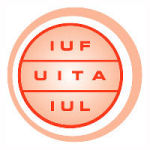Fonterra and the China milk scandal - too many unanswered questions
Posted to the IUF website 29-Sep-2008Share this article.
State media in China first began reporting about babies falling ill from milk formula on September 11, after one baby had died from kidney stones in Gansu province. The first reports spoke of "an unknown number of infants in at least seven provinces and regions suffering from kidney stones after drinking milk formula marked San Lu".
San Lu is the joint venture partner of New-Zealand-based dairy giant Fonterra Co-operative Group.
The following day, as Chinese authorities revealed that the chemical compound melamine had been found in samples of baby milk powders, Chinese media reported that the San Lu Group had issued an immediate recall of milk formula made before August 6. The only comment that could be drawn from Fonterra was, "We understand that the product involved is only sold in China."
On September 15, as the Chinese media reported a second death from melamine-laced milk powder, the New Zealand Prime Minister announced that it was her government that had blown the whistle on the tainted milk scandal and set off the recall following the failed attempt by Fonterra to have its joint venture partner's products removed from sale.
That same day, Fonterra issued a statement which was stunningly ambiguous and evasive. They revealed that they had been advised of the contamination of baby formula at a San Lu Board meeting which had taken place on August 2! The statement goes on to say that they "pushed hard" for San Lu to recall the formula and that San Lu "immediately implemented a trade recall of infant formula" followed by "a full public recall of all infant formula". However, this "immediate recall" didn't happen until September 12 - 5 days after the New Zealand government alerted the Chinese government after having been alerted by Fonterra 3 days before.
What was Fonterra doing between August 2 and September 5, when it took the step to inform the New Zealand government?
At a media conference on September 24 to announce its 2007/08 results and cash distribution to farmer-shareholders, Fonterra management offered an answer to explain its scandalous omission: "We firmly felt the most effective way to get the product off the shelves and away from consumers was to work within the Chinese system".
But did it take one month for Fonterra to realize that working within the Chinese system wasn't working? The long history of official complicity and complacency in the face of food contamination scandals in China should have been taken as a call to immediate action.
Amazingly, company management continues to contend they had done all they possibly could during this period, and are now trying to relativize their responsibility by calling San Lu's handling of the melamine scandal "appalling" and accusing them of having attempted to cover up the contamination since December 2007.
Fonterra's own handling of the crisis can only be called a cover up - not only of the contamination scandal, but of its own negligence. Why was Fonterra not aware that San Lu had been receiving complaints about contaminated milk powder since December 2007? The answer might be found in the company's own admission that only one of its 3 directors on the Board of San Lu is a Mandarin speaker. Unofficial websites had been asking questions about tainted milk powder from San Lu for months. Why was Fonterra not monitoring these blogs about food safety? Why did Fonterra fail to put people and systems in place to ensure standards and product safety? Why did it fail to put any efforts into securing the safety of the supply chain?
It is clear that working within the Chinese system has not brought the hoped-for results. Four babies have died and some 50,000 more are ill from adulterated milk powder; Fonterra has taken an impairment charge of the equivalent of USD 95 million to cover the cost of the product recall and loss in San Lu's brand value; and Fonterra's own goodwill has been damaged as the public continues to ask how the company could possibly have let this scandal for so long without publicly sounding the alarm.
Fonterra have talked about the tragedy of the deaths and the thousands seriously ill. They have talked about damage to the brand and loss to their investment. What they have not talked about is that their negligence in China and damage to their reputation puts jobs and livelihoods at risk, including in New Zealand where their products represent 25% of export revenue.
